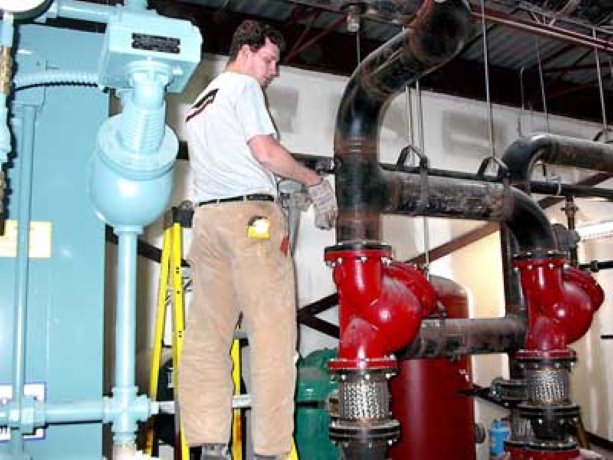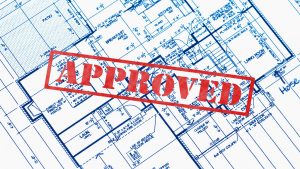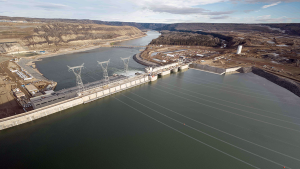Plumbing systems are the latest specialty group to forge their way into the LEED process.
LEED
Plumbing systems are the latest specialty group to forge their way into the LEED process.
“Water efficiency is essential in LEED, the reclaiming of roof water that is stored in a cistern to use for the non-potable water system,” said Dan Gueguen, a vice president with Dordan Mechanical Constructors Inc.
The Kitchener-based company is focusing on green plumbing systems, including that in its work currently being done at the new Niagara Regional offices in Thorold, which will seek LEED recognition.
“As well, all faucets and showers are restricted down to half a gallon to a gallon of water a minute, with a network of pipes dedicated to that,” said Gueguen.
“If there are any exterior hose beds or if they wish to stay with natural grasses, which is frowned upon, the lawn sprinkler system would also be dedicated from cistern water supply.”
Plumbing systems must incorporate energy efficiency in regards to the pumps and heating systems.
Last year, Dordan set up a plumbing system for the Accelerator Building in Waterloo.
“The boilers are all 98.9-per-cent efficient, which brings you into a condensing boiler, which allows you to reclaim heat off the flu gasses and get an extra burn,” said Gueguen.
“The Accelerator Building has a low-mass system – the first six feet of the perimeter in-floor has tubing cast right in the perimeter edge of the slab.
“Rather than have an exposed wall fin cabinet, the slab is doing your perimeter walls, so you are only running your plant when you need to at a high of approximately 143 degrees Fahrenheit and your outgoing temperature is about 100 F as opposed to 190 or 210 F.”
Automated controls run the systems.
“Even the domestic hot water tank is now energy efficient and we have a condensing hot water-style tank doing the domestic hot water,” said Gueguen.
“This allows us to run our recirculation temperatures lower because the equipment can take it. Typically on your recirculation, you never run a temperature less than 140 F. We can run return temperatures at less than 100 F.”
In addition to having an in-depth knowledge of the equipment, how it works and how it should be maintained, Dordan’s management has to ensure its employees are up-to-date in the latest construction techniques, especially as new demands are placed upon their technical knowledge.
“It’s a little bit different to what they are used to,” said Gueguen.
“Also, during construction, all the solvents for plastics that we use have to meet proper volatile organic compounds, to make sure that you are not bringing harsh solvents inside.
“This makes for a better working environment for the workers and a better air environment for the turnover to the owner.”
With experience in LEED/green construction on record, Dordan is gaining a reputation for its green plumbing work, which in turn is leading to more inquiries.
“Even in the private sector, people are looking to green building – what it entails and the cost implications,” said Gueguen.
“We have a spreadsheet that we work from that explains the economic models for various options. Government is helping to promote LEED/green construction and have incentives in place for people to take the green approach.”
While prices for specialized plumbing and heating equipment are coming down, the sophistication, particularly in regards to automation, is improving in turn.
With more choice, Dordan can offer its clients a variety of options.
“You have to be smart in your approach and some efficiencies don’t make much sense,” said Gueguen.
“You try to make sure that energy paybacks are within five years because they can see the benefits.
“For someone who is building a facility for themselves, that is where you are starting to see regional and university buildings getting on board this approach because they are building for a lifetime.”











Recent Comments
comments for this post are closed